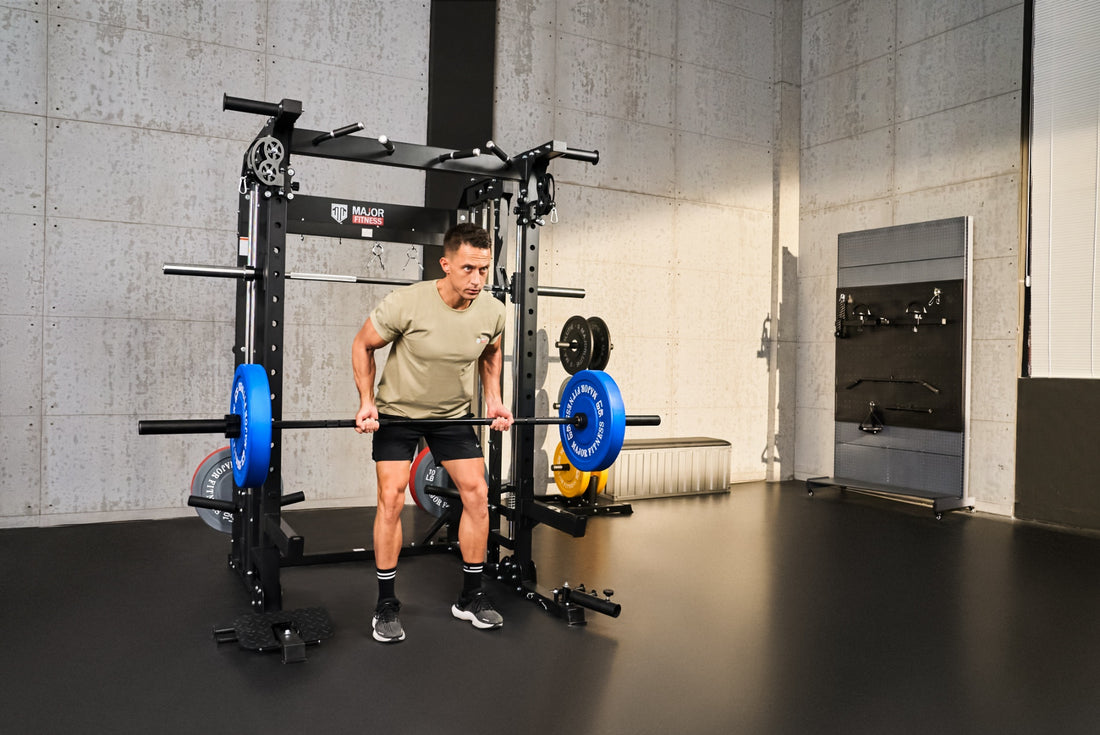
The bent over barbell row is a cornerstone exercise for anyone looking to develop a strong and muscular back. However, one common mistake people make is not performing it correctly. In this guide, we'll teach you how to do bent over barbell rows properly, ensuring that you maximize your muscle gains while minimizing the risk of injury.
Whether you're a beginner or a seasoned athlete, understanding the nuances of this exercise can take your back workouts to the next level. Read on to discover tips from top fitness experts, detailed steps, common mistakes, and why this exercise should become a staple in your routine.
The Benefits of Bent Over Barbell Rows
The bent over barbell row primarily targets the muscles in your middle and upper back, including:
- Latissimus Dorsi: The large muscles in your back that give you the 'V' shape.
- Rhomboids: Smaller muscles between your shoulder blades that aid in scapular retraction.
- Trapezius: Upper back muscles involved in shoulder movements.
- Erector Spinae: Help in maintaining proper spinal alignment.
Additionally, bent over barbell rows engage your core, helping you to build overall body strength and stability.
Step-by-Step Guide: How to Do Bent Over Barbell Rows Correctly
Follow these steps to maximize your results and prevent injuries:
- Setup: Start by standing with your feet shoulder-width apart, knees slightly bent. Grab the barbell with an overhand grip, hands slightly wider than shoulder-width.
- Initial Position: Bend at your hips to lower your torso until it's almost parallel to the floor. Keep your back straight, head neutral, and eyes looking at the floor a few feet ahead of you.
- Engage Your Core: Tighten your abdominal muscles to stabilize your spine. This will help you maintain proper form throughout the exercise.
- Row the Barbell: Pull the barbell towards your lower ribcage, keeping your elbows close to your body. Squeeze your shoulder blades together at the top of the movement.
- Control the Descent: Slowly lower the barbell back to the starting position, maintaining control throughout the movement.
- Repeat: Perform the desired number of repetitions, ensuring that you maintain proper form for each rep.
Pro Tips for Better Results
- Grip Variation: Use an underhand grip occasionally to target different areas of your back.
- Tempo Control: Incorporate slower tempo reps to increase time-under-tension and muscle growth.
- Mind-Muscle Connection: Focus on feeling the muscles in your back working with each rep for better activation and growth.
Common Mistakes and How to Avoid Them
Even seasoned athletes can make mistakes when performing bent over barbell rows. Here are some common pitfalls and how to avoid them:
- Using Too Much Weight: Quality over quantity. Using excessive weight can lead to poor form and increase the risk of injury. Start light and gradually increase the load.
- Rounding the Back: A rounded back can cause spinal injuries. Maintain a straight back by engaging your core and keeping your chest up.
- Jerking Movements: This compromises muscle engagement and can cause injuries. Execute the movement in a controlled manner, focusing on smooth, steady reps.
- Neglecting Full Range of Motion: Ensure that you're fully extending your arms at the bottom and fully contracting your back muscles at the top for maximum benefit.
How to Incorporate Bent Over Barbell Rows Into Your Workout
For optimal muscle development, incorporate bent over barbell rows into your routine 1-2 times per week. Here are some workout templates to get you started:
For Beginners
Day 1:
- Warm-up: 5-10 minutes of light cardio
- 3 sets of 8-10 reps of bent over barbell rows
- Finish with light stretching and mobility exercises
For Intermediate Lifters
Day 1:
- Warm-up: 5-10 minutes of dynamic stretches
- 4 sets of 8-12 reps of bent over barbell rows
- Add accessory back exercises like lat pulldowns or cable rows
For Advanced Lifters
Day 1:
- Warm-up: 5-10 minutes of high-intensity interval training (HIIT)
- 5 sets of 6-8 reps of bent over barbell rows at high weight
- Superset rows with pull-ups or T-bar rows for maximum muscle fatigue
Conclusion
Now that you know how to do bent over barbell rows correctly, it's time to incorporate them into your workout regimen. This exercise is incredibly effective for building a strong, muscular back and improving overall upper body strength. Remember to start with lighter weights, focus on proper form, and progressively increase the load as you become more comfortable with the movement. Happy lifting!





















